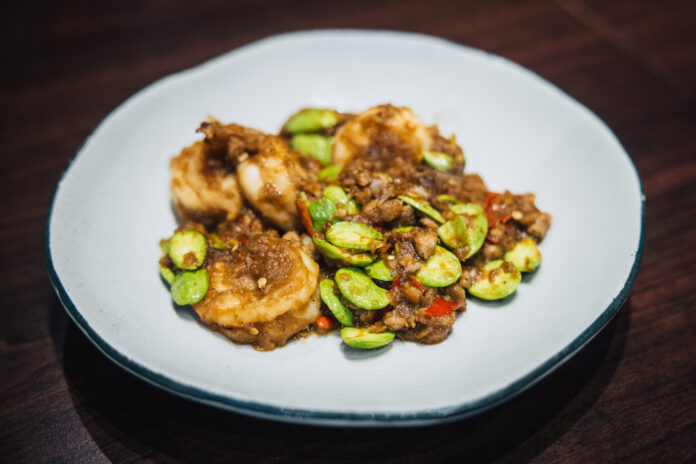Let’s be honest, airports aren’t exactly the highlight of any trip, are they? But when it comes to Bangkok’s behemoth of an aviation hub, a little savvy know-how can make all the difference between a smooth start to your Thai adventure and a sweaty, frustrated mess.
Bangkok is served by two international airports: Suvarnabhumi Airport (often informally called Bangkok Airport) and Don Mueang International Airport. Suvarnabhumi Airport (BKK) serves as the city’s primary international terminal, welcoming the majority of overseas carriers and also accommodating select domestic routes. Meanwhile, Don Mueang Airport (DMK) has carved out its niche as the preferred base for budget carriers and domestic operations.
The name Suvarnabhumi (pronounced ‘su-wan-na-poom’) was chosen by King Bhumibol Adulyadej and translates to ‘The Golden Land.’ This name traditionally refers to the continental Indochina region encompassing Thailand, Cambodia, Laos, and Burma.
Opened in 2006 after decades of planning and construction, Suvarnabhumi is a proper juggernaut of modern architecture – all soaring glass ceilings, sweeping curved roofs and gleaming steel. With its annual capacity of 60 million passengers, it’s not just Thailand’s largest airport but one of Asia’s major aviation hubs. The main terminal building alone covers a staggering 563,000 square meters (making it one of the largest in the world), and with its 132 operating aircraft gates and parking bays, you’d be forgiven for feeling a tad overwhelmed on your first visit.
The airport sits about 30km east of central Bangkok – close enough to the city to be convenient but far enough away that the journey in can still take anywhere from 30 minutes to 2 hours depending on Bangkok’s notoriously fickle traffic.
There’s nothing quite like landing in Bangkok. The warmth hits you like opening an oven door. The first thing you’ll want to do is get your bags and dash off. However, take a breath – your holiday starts and ends right here at the airport, and these insider tips will make all the difference.
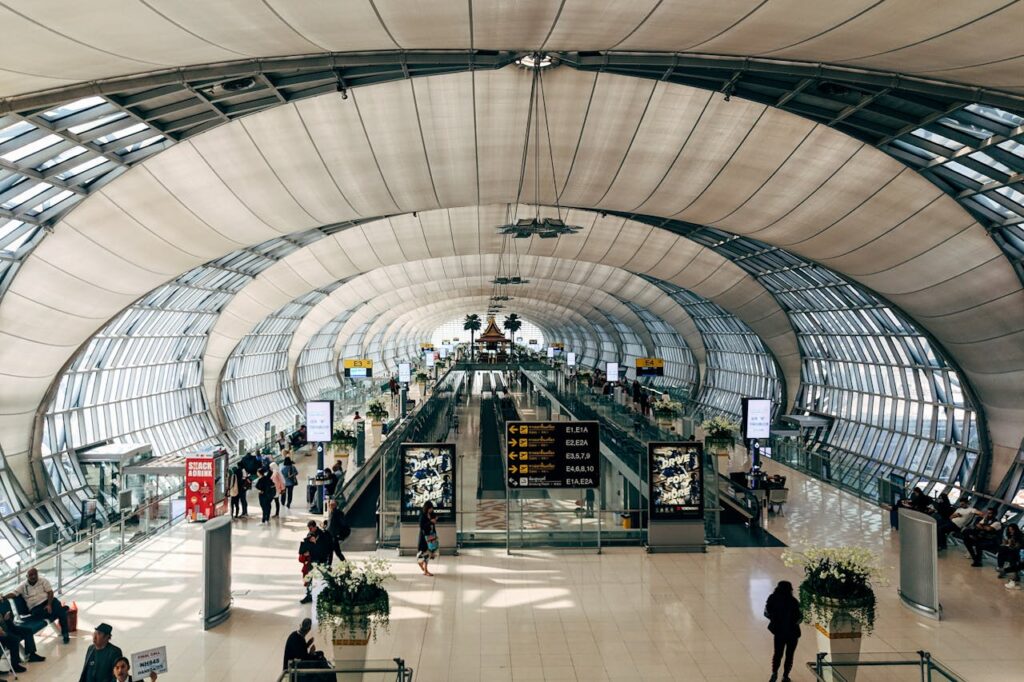
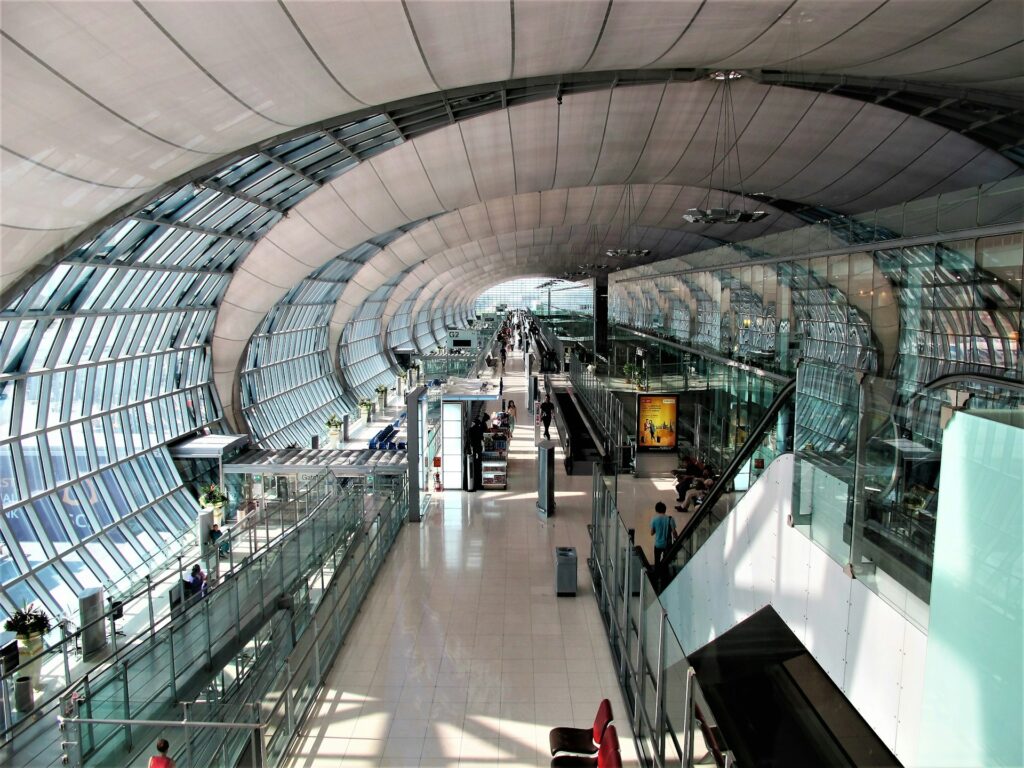
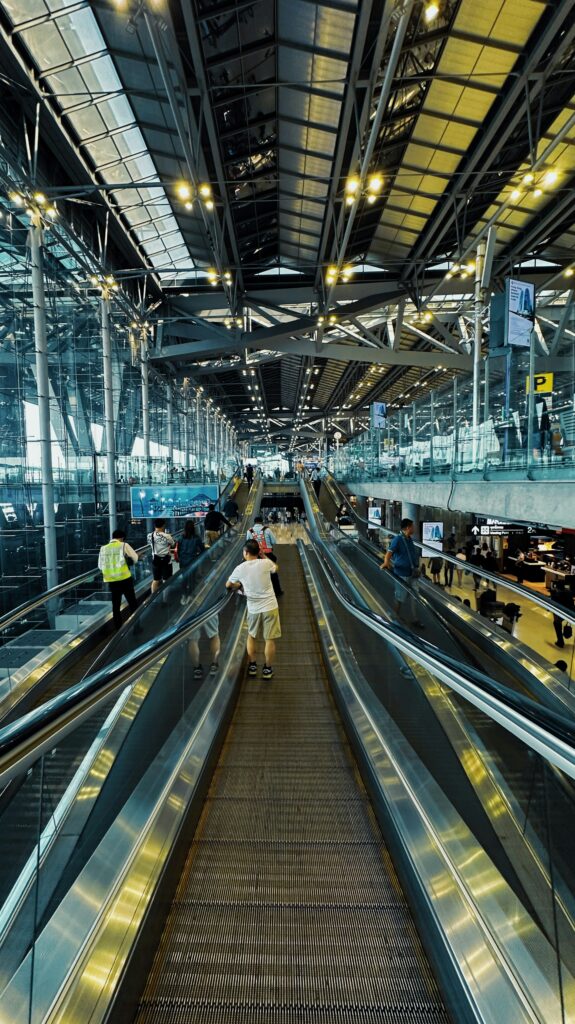
Get A Local Sim With Internet Right Away
Listen, we can’t stress this enough. Before you dash off to hail a taxi or chase down that Airport Rail Link, take five minutes to sort your connectivity. There are stands at the airport where you can get a sim card, and they’ll set it up for you on the spot.
The AIS Traveller SIM is absolutely brilliant value. Running for 8, 15, or 30 days, for just 299 Baht (around £7), 599 Baht (around £14), or 1,250 Baht (around £30) respectively, you get either 15 GB, 30 GB, or a whopping 300 GB of high-speed internet access.
Better still, if you’re feeling particularly tech-savvy, consider grabbing an eSIM before you even leave home. Companies like Airalo, Nomad, and Maya Mobile offer competitive eSIM packages specifically designed for Thailand. The process takes mere minutes—simply purchase online, scan a QR code, and your phone is ready to connect the moment you land at Suvarnabhumi.
We’ve found getting an eSIM in advance to be a proper game-changer – no more fumbling with tiny SIM cards or queuing at counters when all you want to do is get out of the airport and start your holiday. Plus, you can set everything up days before your trip while sitting comfortably on your sofa at home, rather than battling jet lag at the airport.
Be sure to sort phone insurance if you’re travelling with your device – it’s all too easy to lose your mobile down the back of a tuk tuk. Trust us, we’ve made that mistake before!
Read: 7 travel insurance mistakes that could cost you thousands
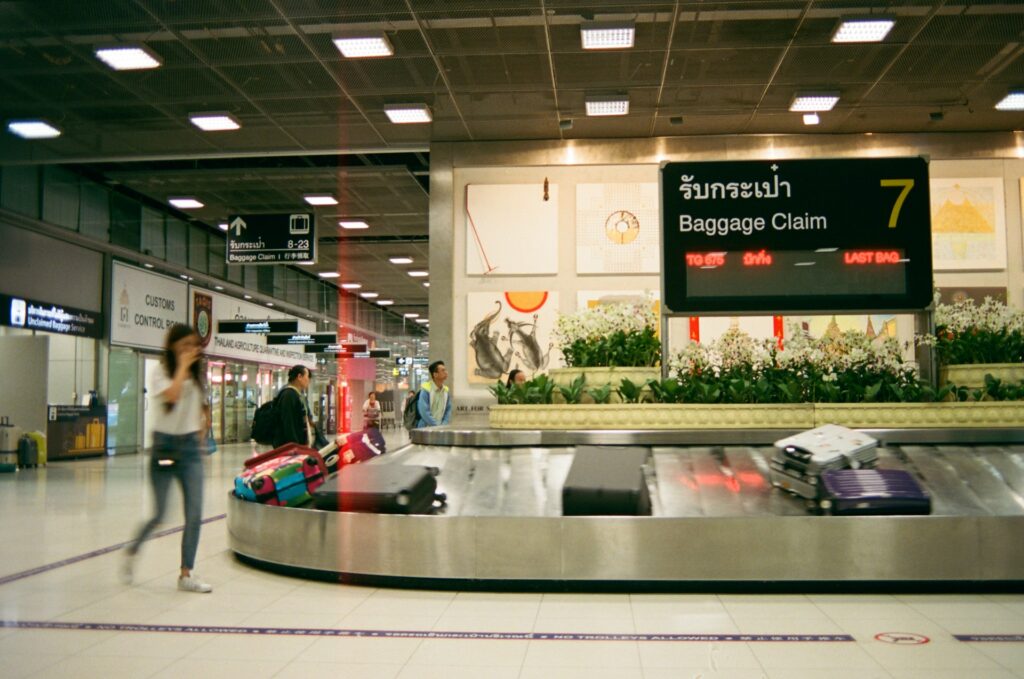

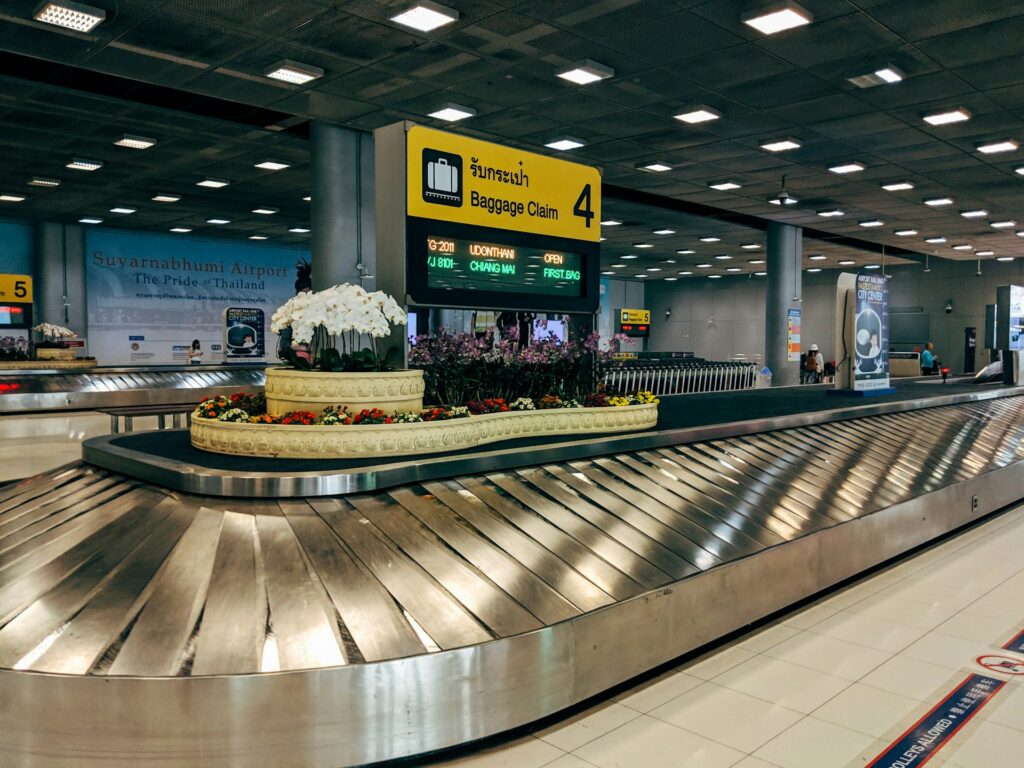
Refuel At Magic Food Point
Sometimes plane food just doesn’t cut it, does it? If you’re starving after getting off the plane, make a beeline to Magic Food Point, the airport’s 24-hour food court, which is located on the 1st floor. Serving authentic Thai dishes at reasonable prices, it’s a proper introduction to the food scene you’ve come for.
The food court operates on a coupon system that might seem a bit confusing at first, but it’s actually dead simple. Here’s how it works: first, you’ll need to exchange your cash for a prepaid card at the cashier counter (look for the ‘Coupon Counter’ sign). You can load it with however much you think you’ll spend – 200-300 baht should be plenty for one person. Then simply wander around the various food stalls, point at what you fancy, hand over your card to be debited, and voilà – food is yours! If you’ve got any credit left on the card after your meal, just take it back to the cashier counter for a refund.
Magic Food Point hosts about 15-20 different food stalls offering everything from classic pad thai and green curry to more adventurous regional specialties. Zeed Zaad does a cracking som tam (papaya salad) and grilled chicken combo that’s nothing short of well, magic after a long-haul flight. It will reinvigorate you that’s for sure. There’s also an excellent Hainanese Chicken Rice stall, a dish that is wonderfully soothing after being on a plane for hours.
For those with less adventurous palates, you’ll find stalls selling fried rice and fresh fruit smoothies.
Read: The best places to eat street food in Bangkok
Terminal Know How
There are three terminals in total: Terminal 1 and Terminal 2 handle the international flights, while the third is just for domestic flights.
If you’re transferring between these terminals, the airport provides free shuttle buses that run every 10-15 minutes. You’ll find the shuttle bus stops clearly marked with blue signs on the ground floor of each terminal – specifically at Gates 1 and 5 in Terminal 1, Gates 2 and 6 in Terminal 2, and at the main entrance of the Domestic Terminal. Just look for the ‘Terminal Shuttle Bus’ signs and the queue of slightly confused-looking travellers.
The shuttles themselves are surprisingly comfortable air-conditioned minibuses, and they’re an absolute godsend given the sprawling nature of the airport complex. Don’t attempt to walk between the terminals unless you fancy a sweltering hike (trust us, we’ve made that mistake before). Even what looks like a short distance on the airport map can turn into a 20-minute trek through humid corridors. The shuttle journey, by contrast, typically takes just 5-7 minutes between terminals, even during the busiest times.
The Taxi Stand is Easy Peasy
While we’d definitely recommend booking a Grab taxi if you’re flying from Don Mueang airport (which is a bit of a free-for-all when it comes to transportation), getting a taxi at Suvarnabhumi is relatively straightforward.
To catch a public taxi, you need to go down to Level 1. Once you arrive, there are a number of different options for taxis. However, the metered taxi is the cheapest and best option.
Politely decline any taxi drivers hailing you down inside the airport and make straight for the ‘Public Taxi Service’ line. The system is wonderfully organised, with numbered queues and a ticket system that matches you with your driver.
Simply go outside and enter a lane where you’ll use a multi-language touch-screen to print out your queue ticket. The number on your ticket corresponds to the number of the bay where your taxi is parked. The ticket details the driver’s name, plate and operating licence number—quite handy if you happen to leave something behind.
Just be sure the driver turns on the meter (which starts at 35 baht) when you get in, and you’ll avoid any vocal figure surprises when you reach your destination.
Be sure to keep important directions and addresses in your phone so you can show the driver. Even with your perfect pronunciation of “Sukhumvit,” your driver might look at you blankly – a visual aid works wonders.
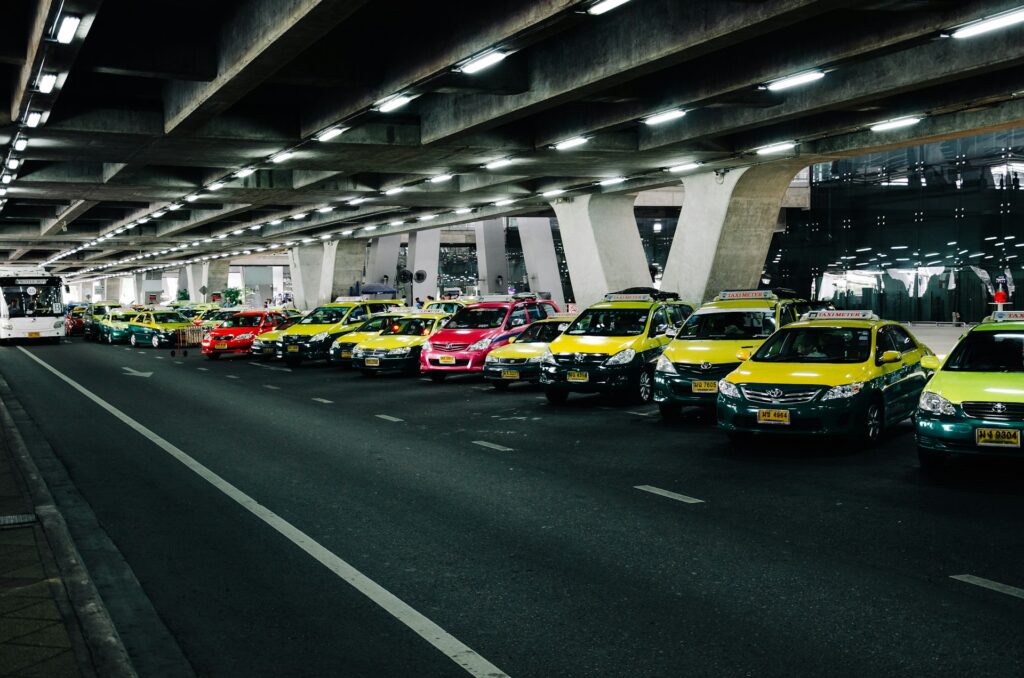
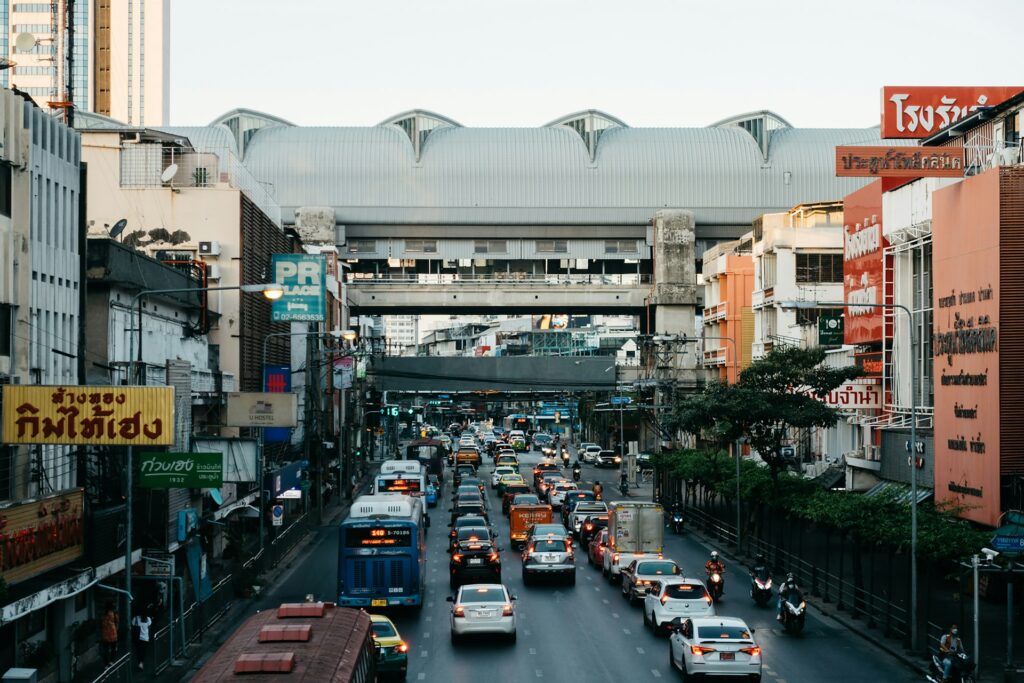
Airport Rail Link Need To Know
Bangkok Airport Rail Link is a commuter rail line connecting Suvarnabhumi Airport to Phaya Thai (BTS) station via Makkasan Station (MRT Phetchaburi) and it’s a brilliant way to avoid Bangkok’s notorious traffic.
To catch the train from the airport into town, head to the basement level (B floor) of the terminal building. Follow the prominent blue ‘Train to City’ signs—they’re everywhere, so you can’t miss them. Once you reach the station, you’ll find ticket machines with English language options and manned ticket counters if you prefer the human touch.
Purchase your ticket from the machines (they accept coins and bills), tap it on the gate to enter, and keep it for your exit. Trains are clean, air-conditioned, and have dedicated spaces for luggage—a godsend after a long flight.
Coming back the Airport Rail Link operates a train from Sukhumvit MRT to Suvarnabhumi Airport (BKK) hourly, and it’s a brilliant way to avoid Bangkok’s notorious traffic. Alternatively, you can go from either Nana or Asok station to Phaya Thai station, where you transfer to the Airport Rail Link, which operates daily from 6am to midnight.
The Commuter City Line trains depart every 10 minutes during peak hours (06:00-09:00 and 16:00-20:00) and every 15 minutes off-peak and weekends.
The journey takes about 30 minutes and costs a fraction of what you’d pay for a taxi. It’s particularly handy if you’re travelling during Bangkok’s rush hour, when the roads transform into slow-moving car parks.
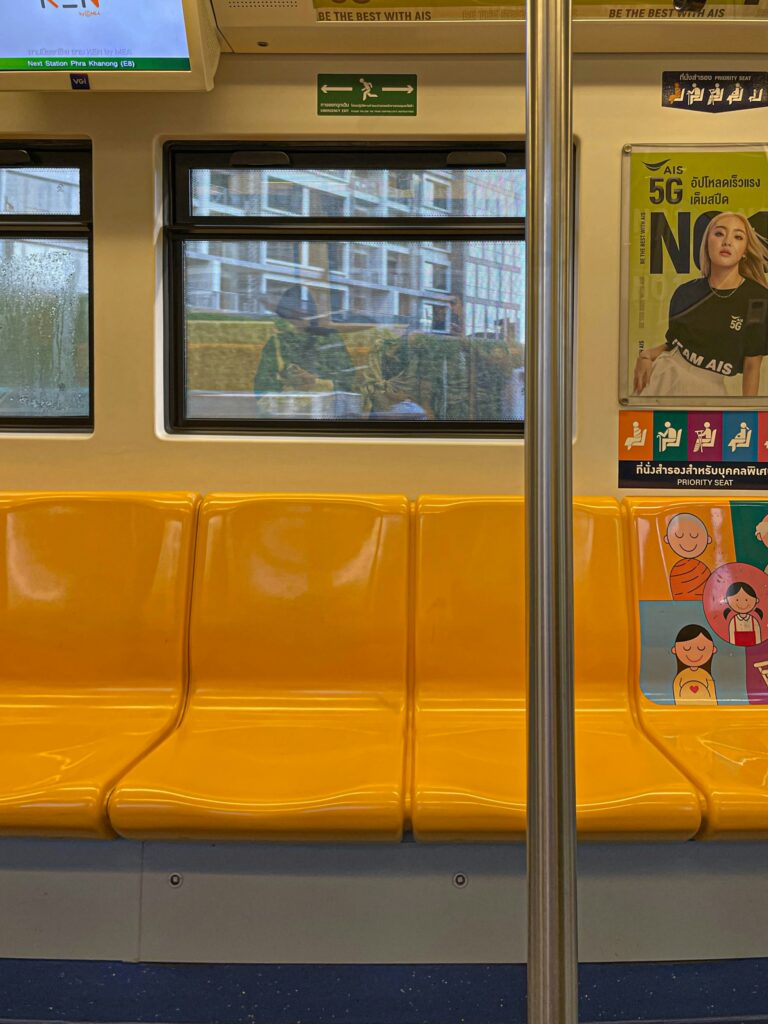
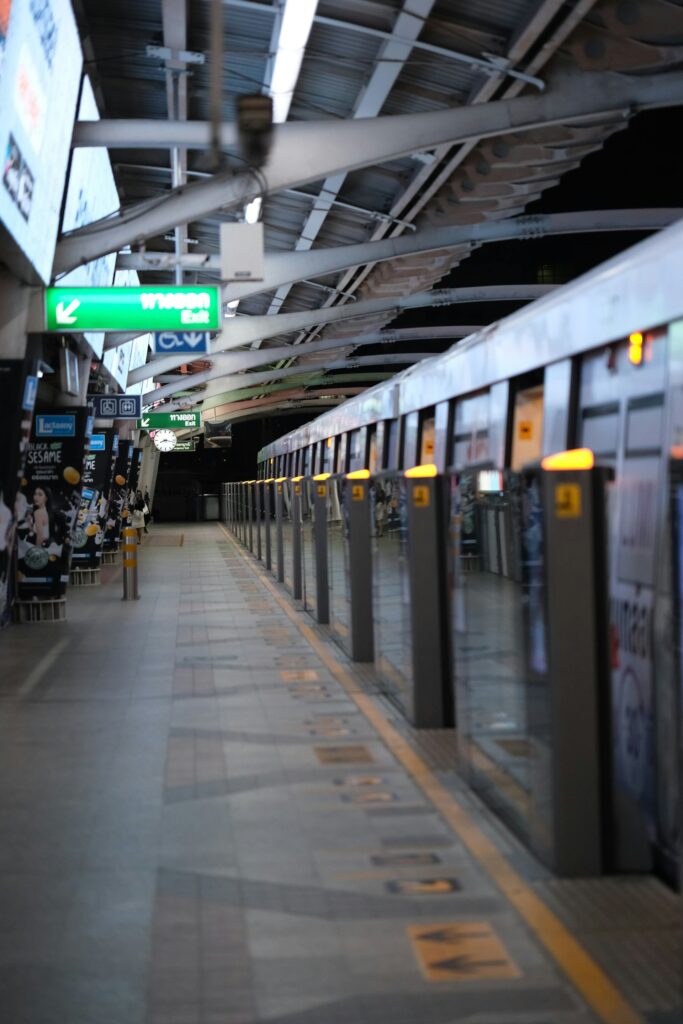
Leave Your Luggage
If you’re only staying in Bangkok for a couple of days and moving on, or have an extended layover, the airport offers several left luggage services. This is perfect for travellers who want to pop into the city without dragging their suitcase around in the sweltering heat.
You’ll find luggage storage facilities at the following locations:
Basement Level (B Floor): The main luggage storage service is located on the basement level near the transport centre. Look for signs pointing to ‘Left Luggage’ or follow directions to the Airport Rail Link, then look for the storage counter nearby.
Arrivals Hall (Level 2): There’s another storage service on the second floor in the arrivals area, near entrance 3. This one’s particularly handy if you’ve just landed and want to explore Bangkok without your bags.
Departures Level (Level 4): For those already checked in but with time to kill, there’s a storage facility on the fourth floor near the east entrance of the departures hall.
Prices are calculated per piece per day, with rates starting at around 100 baht for small items and going up to 250 baht for large suitcases. Most locations accept both cash and card payments. Just bring your passport along as ID, and they’ll issue you a claim ticket.
The service is available 24/7 and is incredibly secure, giving you peace of mind while you explore. Some locations even offer additional services like luggage wrapping and bag repairs – proper handy if your trusty suitcase took a beating in transit.
Read: 7 Ideal travel tips for Thailand
The Airport Lounge is Actually Good Value
Need to refuel, refresh and reconnect before the flight?
There are several airport lounges to choose from. However, we’ve found the Miracle Lounge really good value for money. Starting from just £23.77 the service is available for passengers on international departure flights only.
You get 3-hour lounge access and all you can eat and drink (including alcoholic drinks). The food is suprisingly good – last time we had a make your own miang that would stand up to most. The buffet spread is extensive for an airport lounge, with a decent selection of hot Thai dishes, fresh fruits, salads, and some international options for the less adventurous. They keep everything well-stocked, and the staff are quick to replenish anything running low. You can also use the shower room – perfect for freshening up after a long flight.
While Suvarnabhumi does offer free WiFi throughout the terminal, despite reports that say the opposite, we’ve found that it can be painfully slow at times. Also, the general terminal areas are woefully lacking in spots that are actually conducive to working with your laptop. That’s another reason the Miracle Lounge is worth every baht – not only do you get significantly faster and more reliable WiFi, but they also provide proper work stations with comfortable seating, power outlets, and enough space to spread out your gear. If you need to catch up on emails or get some work done before your flight, this is absolutely the place to do it.
For those with a longer layover, this is actually more economical than venturing into the city, especially when you factor in transport costs and the energy expended navigating Bangkok’s heat.
It’s Hot Inside
While the airport has air conditioning blowing, sometimes it can get awfully hot inside, especially during peak hours when the system struggles to cool the vast terminal spaces filled with travellers.
Dress in light, breathable layers so you can adjust to the fluctuating temperatures. A light shawl or cardigan can also come in handy for the opposite problem – some areas, particularly near the gates, can suddenly blast you with arctic-level cooling.

Bring Your Own Food
Any seasoned traveller knows that dining at Suvarnabhumi comes with a hefty premium. The moment you pass through security, prepare for your wallet to feel considerably lighter. That Starbucks latte? The identical Mango Tree noodle bowl? Even the familiar Burger King Whopper? All command significantly inflated prices compared to their street-side counterparts.
Why, you ask? Well, as a case study that looked into the pricing explains: “A retail outlet is opened in an airport on a premium. Airport authorities also ask for inordinately high rent for retail spaces. So, in order to make profit, they do what is most obvious – hike the price.”
The excessive prices have caused an outcry amongst some travellers, and the state had to investigate. The conclusion reached? There are cheaper food courts operating there, should people not want to eat in a name-brand restaurant. The other conclusion? You can avoid paying over the odds by eating before you travel to the airport, or waiting until you board the plane.
Unfortunately, that food court we spoke about earlier does not operate airside, and since it doesn’t look like the price of airport dining is coming down anytime soon, it’s best to eat before or pick up something to bring with you.
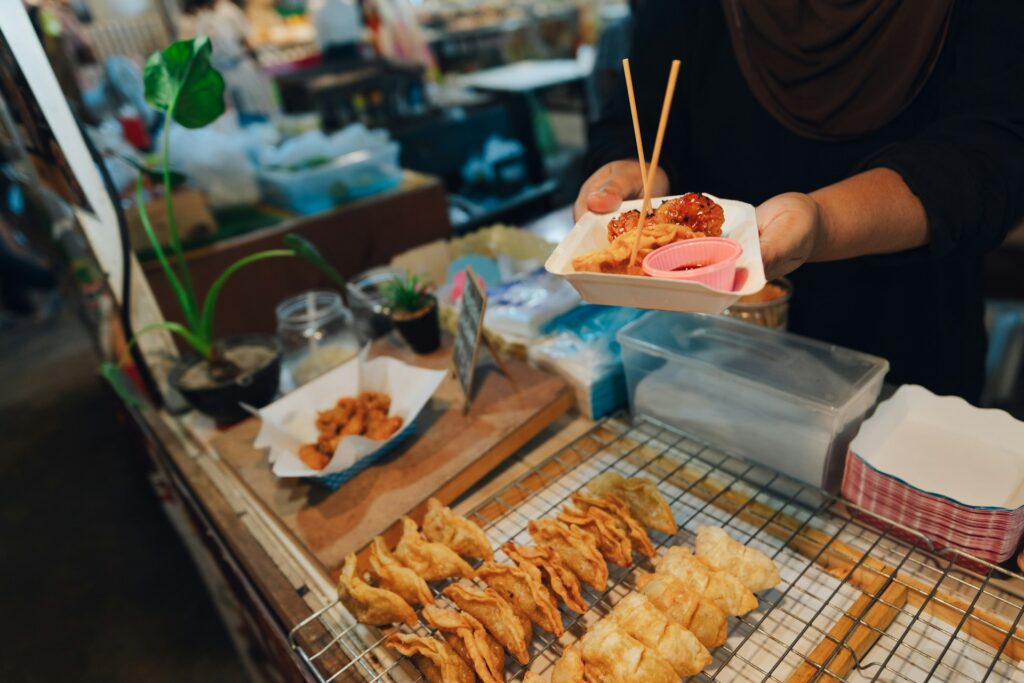
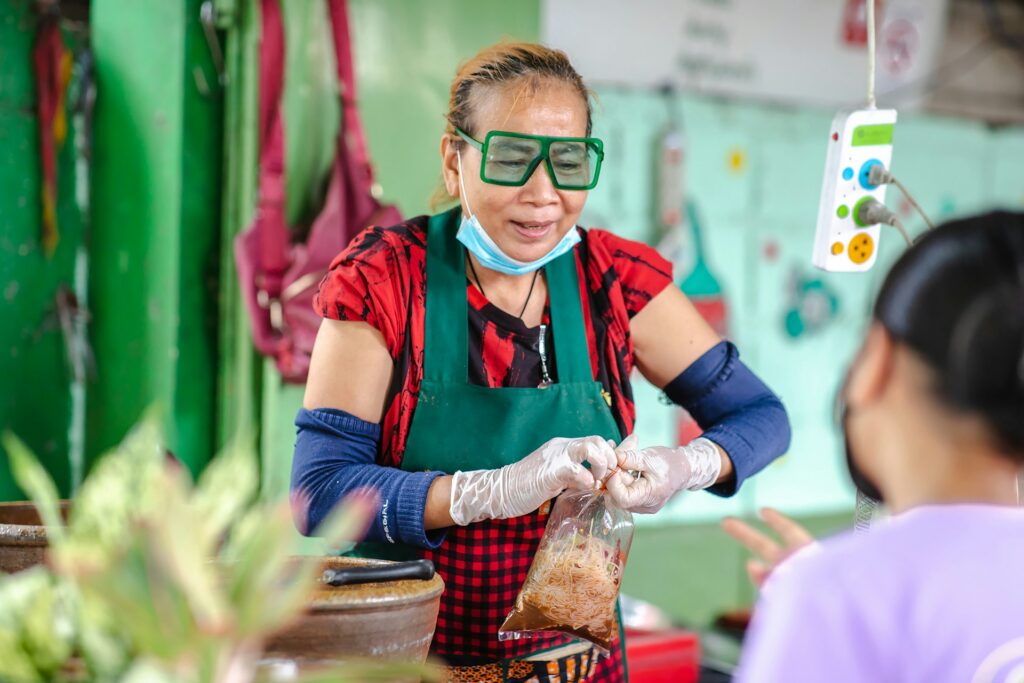
Don’t Forget A Water Bottle
Want to pay nearly ฿200.00 for a bottle of water? We didn’t think so. Don’t forget to bring an empty water bottle through customs to fill up. There are water refill stations dotted around the airport. There are also free refill stations outside the toilets near the gates.
This tiny bit of preparation will save you cash and keep you hydrated in the often stuffy terminal environment.
Buy Some Mango Sticky Rice For The Plane
Forget buying souvenirs here – they are expensive too. There is one thing, however, we have been known to buy for our plane journey at the airport: mango sticky rice. This delightful Thai dessert travels surprisingly well and makes for a perfect mid-flight treat that’s a million times better than whatever the airline is serving up as pudding. It’s exactly the comfort food you need when you’re feeling sad about leaving Thailand behind.
King Power Duty Free store at Suvarnabhumi Airport sells boxes of freshly made mango sticky rice. They also sell freeze-dried mango sticky rice. We have no idea what the later is, but it sounds like it travels well.
The Bottom Line
Remember, the airport experience is part of your journey – approach it with a smile and the same sense of adventure you’re bringing to the rest of your Thai experience.
Safe travels, and enjoy Bangkok’s Golden Land, starting right from the airport gates.

